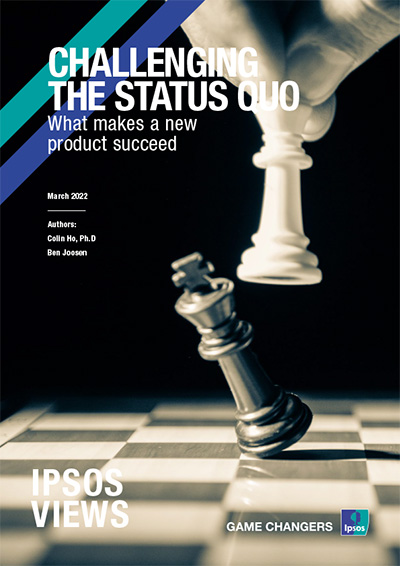What makes a new product succeed
Challenging the status quo
 The assumption is if an innovation has superior performance, attractive packaging, and adequate marketing support, it should succeed. While these are necessary conditions, they are not sufficient.
The assumption is if an innovation has superior performance, attractive packaging, and adequate marketing support, it should succeed. While these are necessary conditions, they are not sufficient.
Innovations must first displace the existing solution – and this depends on whether consumers are willing to change from their status quo and switch brands.
At Ipsos, we have developed a validated framework called SWITCH. There are two sets of opposing forces in our framework – one compels consumers to remain loyal to their existing products (STAY), and the other pushes consumers away from the status quo (GO). The consumer drivers of STAY relate to switching costs, ‘satisficing’ (people using products they feel are good enough), brand loyalty, and shopping habits. The drivers of GO involve a need for change and purchase frequency.
What this means for concept testing
Consumers make decisions about new products relative to what they have today. Therefore, Ipsos tests innovations by benchmarking them against real in-market products, defined by each consumer. This allows more accurate benchmarking of the innovation’s performance.
While our SWITCH framework allows marketers to understand the forces that maintain or disrupt the status quo, our concept testing approach allows marketers to zoom in on the specific forces a particular new product generates.
Five steps to success
The success of your new product depends not just on how good it is but also on how strongly people are attached to their existing solution:
- People stay with an existing solution for different reasons. Persuading consumers to leave their existing solution will require a multitude of strategies
- There are psychological costs to leaving one’s existing solution; help consumers overcome them
- People sometimes stay with an existing solution simply because it’s good enough; that doesn’t mean they are not willing to try something new, but you will need to put your new product into their hands as they are not motivated to seek out alternatives
- Most of us shop like zombies, purchasing what we usually do without much thought. You will need to disrupt that automaticity for people to purchase your new product
- When testing new innovations, have consumers evaluate them in the context of their existing solutions



